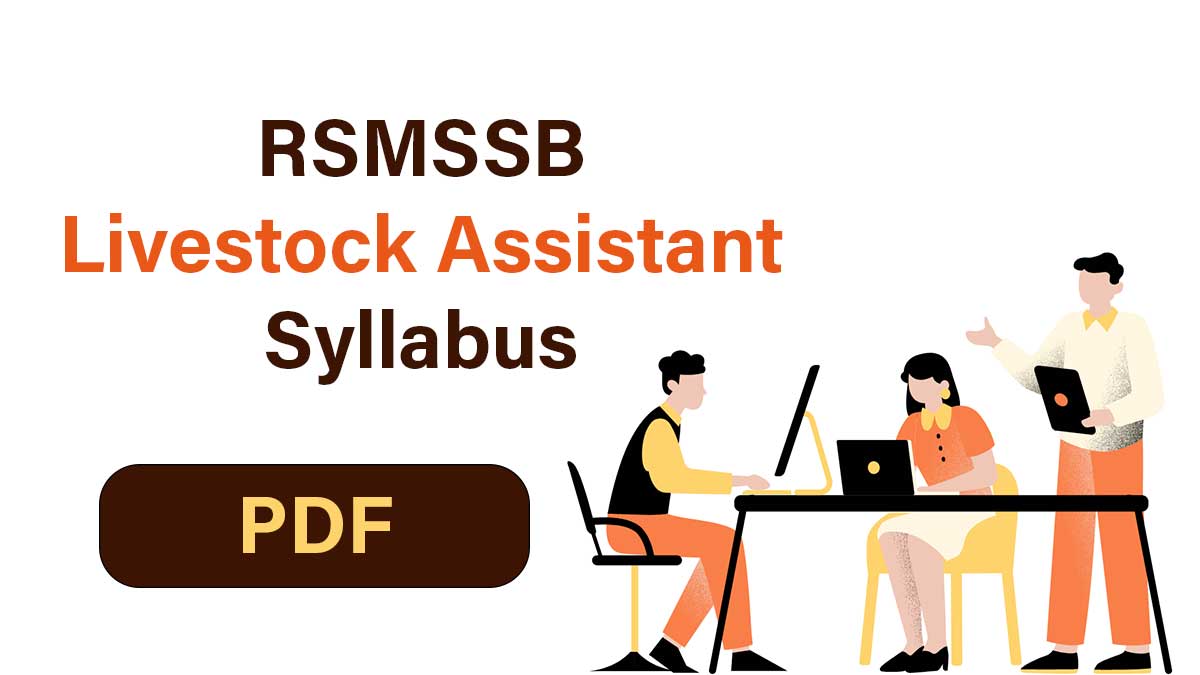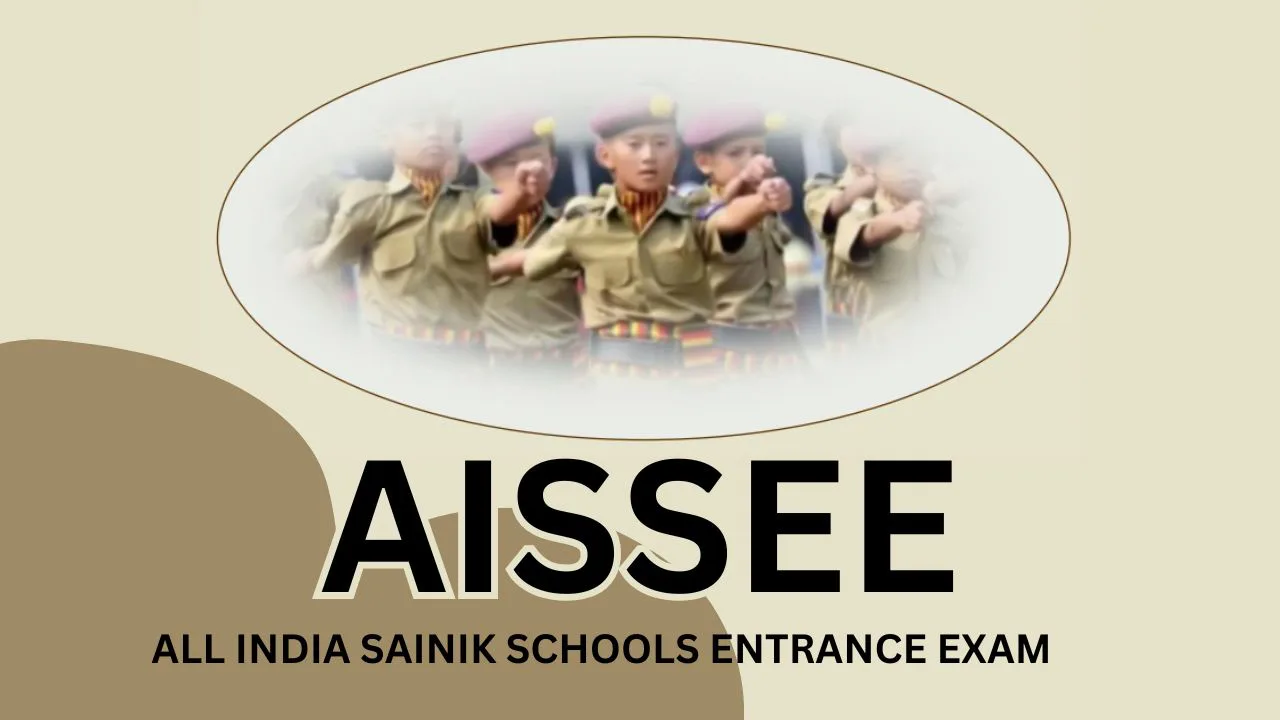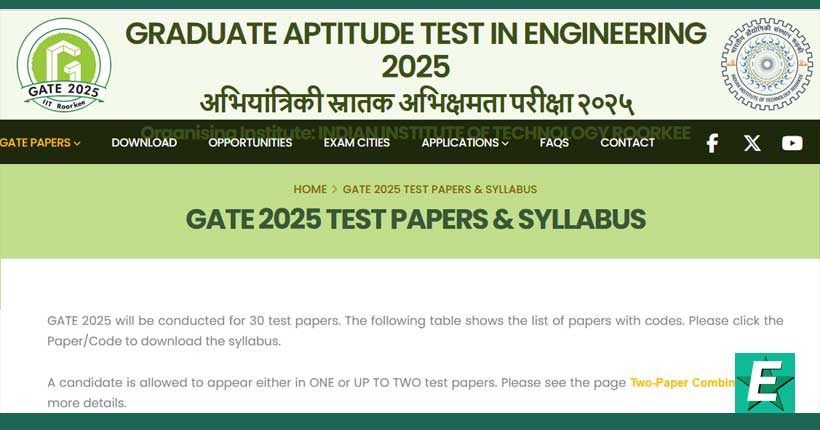RSMSSB Livestock Assistant Syllabus 2025: The officials of the Rajasthan Staff Selection Board have announced 2041 vacancies for the post of Livestock Assistant under Rajasthan LSA Recruitment. The first step towards the Rajasthan LSA Preparation Plan is to be aware of the Rajasthan Livestock Assistant Syllabus & Exam Pattern. Knowing the RSMSSB Livestock Assistant Syllabus PDF will help candidates to be aware of paper patterns and section-wise distribution of marks. In this article, we will provide you with all the necessary information regarding RSMSSB LSA Syllabus for the upcoming exam. Read below article to find out everything about latest updated RSMSSB LSA Syllabus.
RSMSSB Livestock Assistant Syllabus 2025: Overview
| Name of the Organization | Rajasthan Staff Selection Board (RSMSSB) |
| Job Role | Livestock Assistant Posts |
| Total Posts | 2041 Posts |
| Initial Date to Apply | 31 January 2025 |
| Last Date to Apply | 01 March 2025 |
| Category | Syllabus |
| Type of Job | Rajasthan Govt Jobs |
| Work Location | Rajasthan |
| Official Website | rajasthan.gov.in |
RSMSSB Livestock Assistant Exam Pattern 2025
For the sake of the candidates, we had provided the RSMSSB Livestock Assistant Syllabus 2025 along with Exam Pattern pdf on this page.
| Subject | Marks | Time |
| General Awareness | 50 |
3 hours
|
| Veterinary Science | 100 | |
| Total | 150 |
नोट :-
1. प्रश्न पत्र में बहुविकल्पीय प्रकार के प्रश्न होंगे व सभी प्रश्नों के अंक समान होंगे।
2. परीक्षा में न्यूनतम निर्धारित उत्तीर्णाक अंक 40 प्रतिशत है। इससें कम अंक प्राप्त करने वाले अभ्यर्थी नियुक्ति के लिए पात्र नहीं होगें।
पशुधन सहायक भर्ती हेतु परीक्षा की स्कीम एवं पाठ्यक्रम परीक्षा की स्कीम
| प्रश्न-पत्र | अंक |
| Part-A: सामान्य ज्ञान (राजस्थान का इतिहास, कला एवं संस्कृति, परम्पराऐं, विरासत एवं राजस्थान का भूगोल) | 40 |
| Part- B :- VETERINARY SCIENCE | 80 |
RSMSSB Livestock Assistant 2025 Syllabus
In the below section we have provided the complete details about the Rajasthan Livestock Assistant Syllabus and Exam pattern. There are two stages in this recruitment selection process. First one is written exam, in this exam there is two papers, Paper-I and Paper-II and second one is final interview.
Paper 1: General Awareness
| Topic | Details |
| History, Art & Culture, Literature, Tradition, and Heritage of Rajasthan |
Overview of Rajasthan’s history, culture, literature, and heritage including key historical events and figures.
|
| Mughal-Rajput Relations |
Relations between the Mughal Empire and Rajput states.
|
| Unification of Rajasthan |
The historical process of Rajasthan’s unification.
|
| Important Forts, Structures, and Monuments |
Notable forts, monuments, and architectural structures in Rajasthan.
|
| Major Sources of the History of Rajasthan |
Key historical texts, manuscripts, and sources documenting Rajasthan’s past.
|
| Major Dynasties of Rajasthan and Their Achievements |
Overview of major dynasties in Rajasthan like the Rajputs, Mughals, and their contributions.
|
| Prehistoric Civilizations of Rajasthan |
Early civilizations and archaeological findings in Rajasthan.
|
| Salient Features of Architecture |
Key architectural styles and landmarks of Rajasthan.
|
| Folk Music, Folk Dances, Musical Instruments, Festivals, Fairs, Jewellery |
Traditional cultural aspects including folk music, dances, festivals, and crafts.
|
| Religious Movements and Deities of Rajasthan |
Religious practices, movements, and deities worshipped in Rajasthan.
|
| Major Works of Rajasthani Language and Literature, Local Dialects |
Significant literary works in Rajasthani language, dialects, and literary traditions.
|
| Major Paintings, Styles, and Handicrafts of Rajasthan |
Traditional arts, crafts, and painting styles specific to Rajasthan.
|
| Historic Tourist Spots |
Key tourist destinations with historical significance in Rajasthan.
|
| Important Rajasthani Personalities |
Prominent historical and contemporary figures from Rajasthan.
|
| Princely States of Rajasthan, British Treaties, and the 1857 Revolt |
Political history involving princely states, British treaties, and the Indian rebellion of 1857.
|
| Rajasthan’s Political Awakening and Development – Special Reference to Women, Farmers, and Tribes |
Political movements including those led by women, farmers, and tribal groups, and the Prajamandal Movement.
|
| Geography of Rajasthan |
Overview of Rajasthan’s geography, climate, and environment.
|
| Transport and Water Conservation |
Infrastructure related to transport systems and water conservation methods.
|
| Irrigation Projects |
Major irrigation projects in Rajasthan.
|
| Climate, Natural Vegetation, Soil |
Climate types, soil types, and natural vegetation found in Rajasthan.
|
| Drainage System, Animal and Forest Conservation |
Water drainage systems, and conservation of animals and forests in Rajasthan.
|
| Desertification, Environmental and Ecological Issues |
Environmental challenges like desertification and ecological concerns in the region.
|
| Multipurpose Projects, Livestock |
Development of multipurpose projects and livestock management in Rajasthan.
|
| Mineral Resources |
Mineral resources and mining activities in Rajasthan.
|
| Agriculture – Major Crops and Climate Zones |
Major agricultural crops and climate zones in Rajasthan.
|
| Main Physical Division – Desert Region, Aravalli Ranges, Plains, Plateaus |
Physical divisions of Rajasthan, including the Thar Desert and the Aravalli Range.
|
| Everyday Science |
Basic scientific principles applicable to daily life.
|
| Chemistry |
Overview of basic chemical principles and concepts.
|
| Oxidation and Reduction Reactions |
Chemical reactions involving the transfer of electrons.
|
| Catalysts |
Substances that speed up chemical reactions.
|
| Metals, Non-metals, and Their Important Compounds Used in Daily Life |
Properties and compounds of metals and non-metals used in everyday life.
|
| Carbon and Important Compounds of Carbon (Hydrocarbons, Allotropes of Carbon) |
Overview of carbon chemistry, including hydrocarbons and allotropes (e.g., diamond, graphite).
|
| Detergents |
Chemical properties of detergents and their use in cleaning.
|
| Physics |
Basic principles of light, sound, and energy.
|
| Reactions of Light and Its Laws |
Fundamental laws of light behavior (e.g., reflection, refraction).
|
| Dispersion of Light |
How light spreads when passing through different mediums (e.g., prism).
|
| Types of Lenses |
Various types of lenses and their applications (convex, concave).
|
| Vision Defects and Their Corrections |
Common vision issues (e.g., nearsightedness, farsightedness) and corrective methods (e.g., glasses, surgery).
|
| Biology |
Core biological concepts.
|
| General Terminology Related to Genetics |
Basic terms related to genetics (e.g., alleles, genes, inheritance).
|
| Structure of Chromosomes |
Structure and function of chromosomes in living organisms.
|
| Nucleic Acids |
DNA, RNA, and their roles in genetic coding and protein synthesis.
|
| Central Dogma of Protein Synthesis |
Process from DNA → RNA → Protein.
|
| Sex Determination in Humans |
Understanding of the genetic basis of sex determination in humans.
|
| Biotic Factors of Ecosystem |
The role of living organisms in ecosystems.
|
| Energy Flow in Ecosystem |
Energy transfer within ecosystems (food chains, webs).
|
| Biogeochemical Cycles |
Cycles of elements like carbon, nitrogen, and water.
|
| Biotechnology |
General information on biotechnology, genetic modification, and its applications.
|
| Development of New Plant Varieties |
Methods like hybridization, genetic engineering to create new plant varieties.
|
| Transgenic Organisms |
Organisms with genetically modified traits.
|
| Economic Importance of Plants |
Role of plants in the economy, including food production, medicine, and industry.
|
Paper 2: Veterinary Science
1. INTRODUCTORY VETERINARY ANATOMY
2. INTRODUCTORY VETERINARY PHYSIOLOGY AND BIOCHEMISTRY
3. ANIMAL HUSBANDRY EXTENSION
4. INTRODUCTORY VETERINARY MEDICINE
5. MINOR VETERINARY SURGERY
6. INTRODUCTORY ANIMAL NUTRITION
7. INTRODUCTORY ANIMAL MANAGEMENT
8. INTRODUCTORY ANIMAL BREEDING AND GENETICS
9. INTRODUCTORY ANIMAL REPRODUCTION
10. INTRODUCTORY VETERINARY PHARMACOLOGY
| Topic | Details |
| Introductory Veterinary Anatomy |
Basic concepts and understanding of animal anatomy.
|
| Introductory Animal Management |
Principles and practices in managing animals.
|
| Introductory Animal Breeding and Genetics |
Basics of animal breeding, genetics, and inheritance principles.
|
| Introductory Animal Reproduction |
Overview of reproductive systems and practices in animals.
|
| Introductory Veterinary Physiology and Biochemistry |
Basic physiological and biochemical processes in animals.
|
| Animal Husbandry Extension |
Knowledge of animal husbandry practices and extension services.
|
| Introductory Veterinary Pharmacology |
Basics of veterinary pharmacology, drug use, and treatment.
|
| Introductory Veterinary Medicine |
Introduction to veterinary medicine and medical practices for animals.
|
| Minor Veterinary Surgery |
Basics of minor surgical procedures in veterinary practice.
|
| Introductory Animal Nutrition |
Fundamentals of animal nutrition, including dietary requirements.
|









